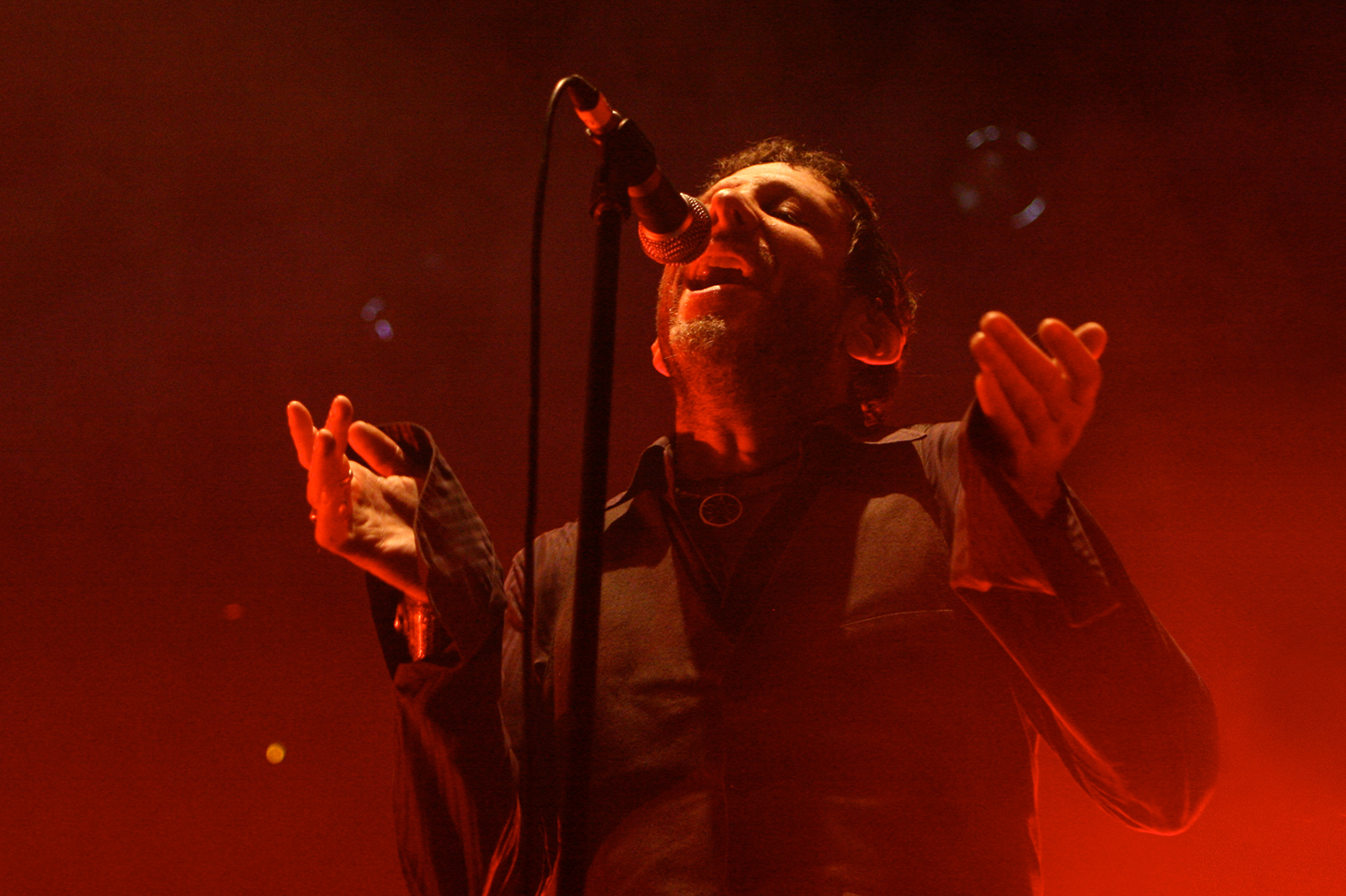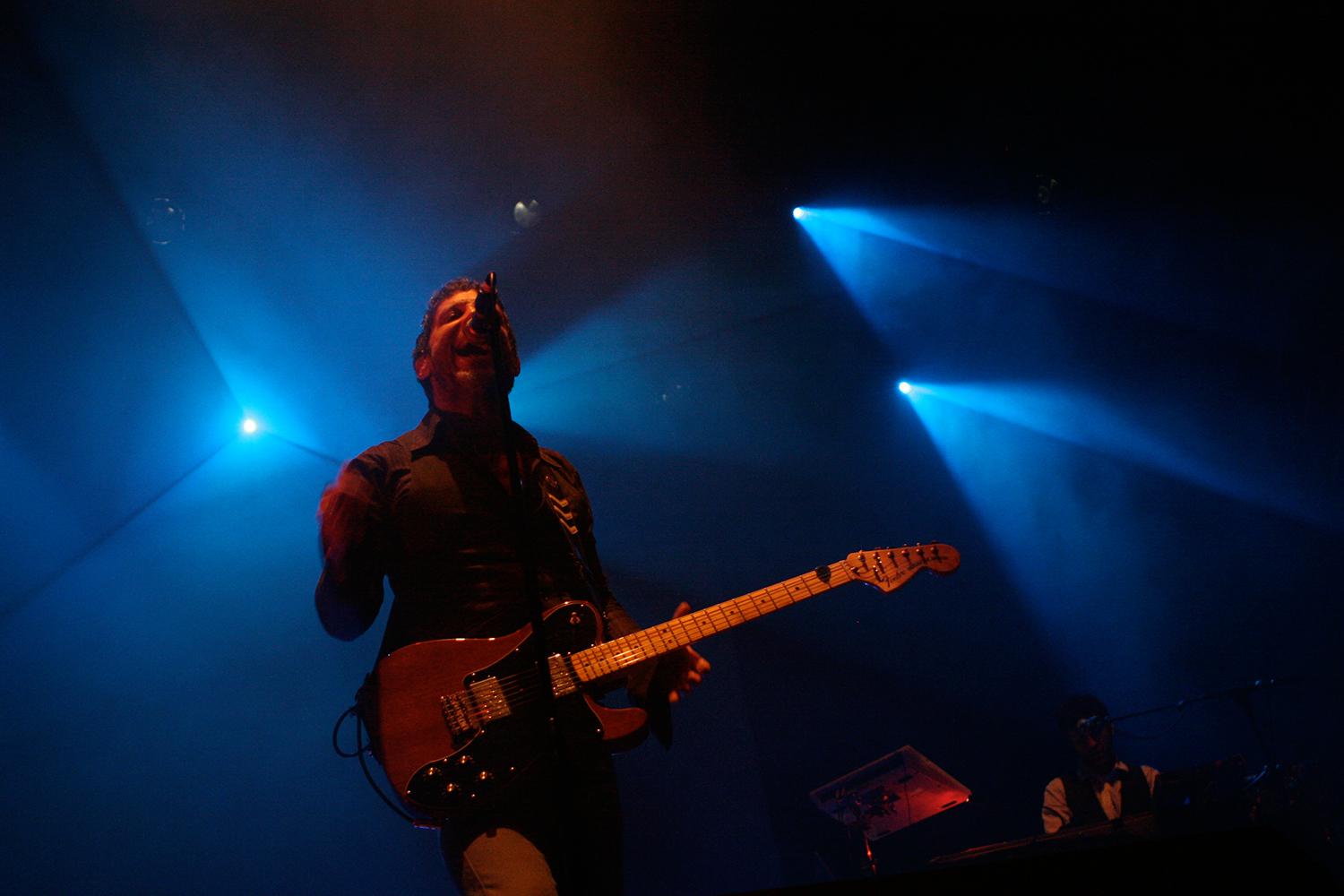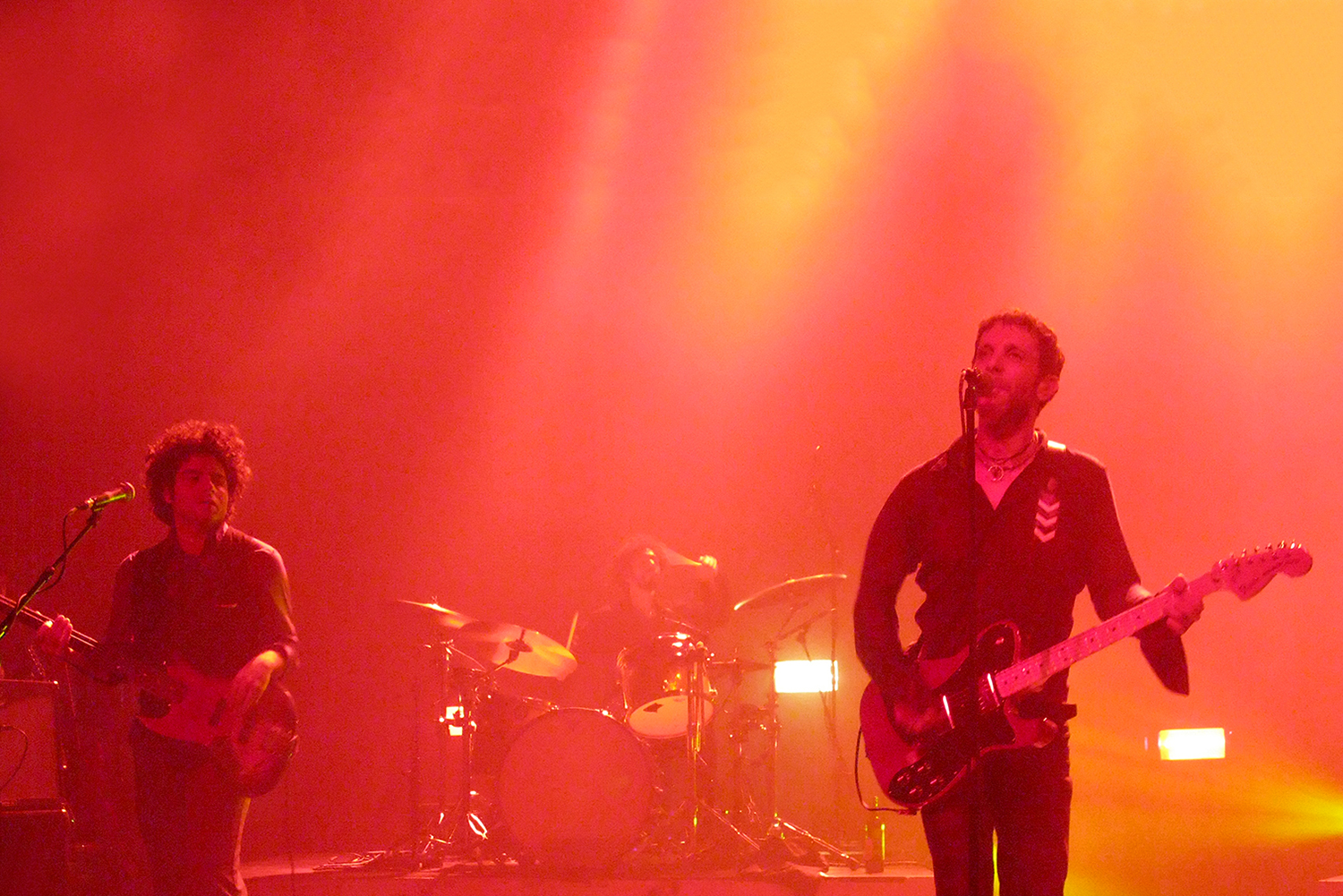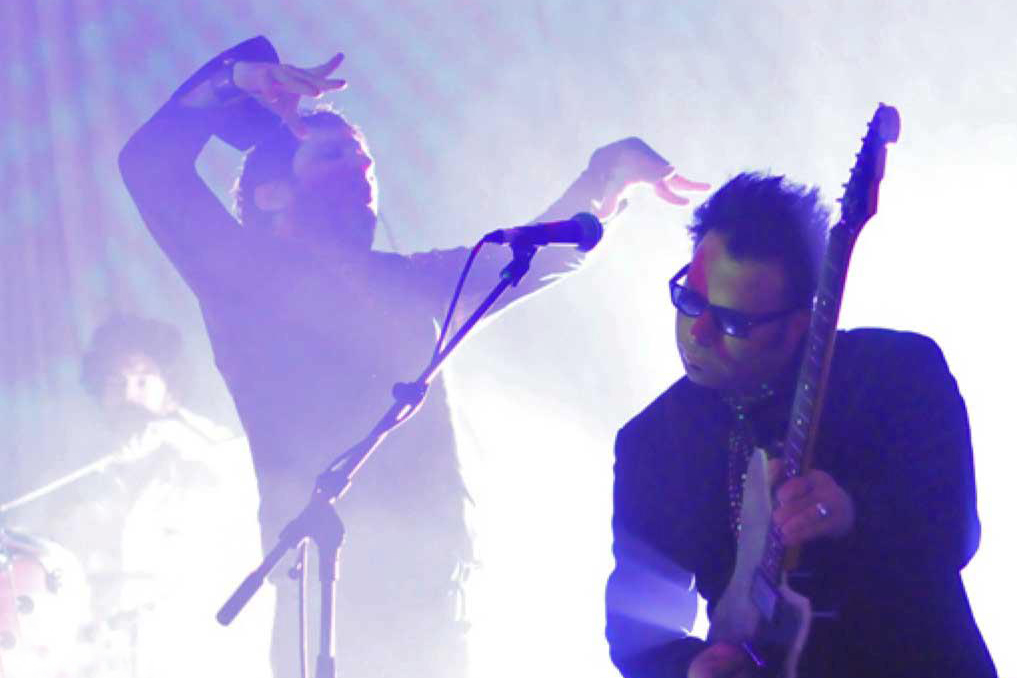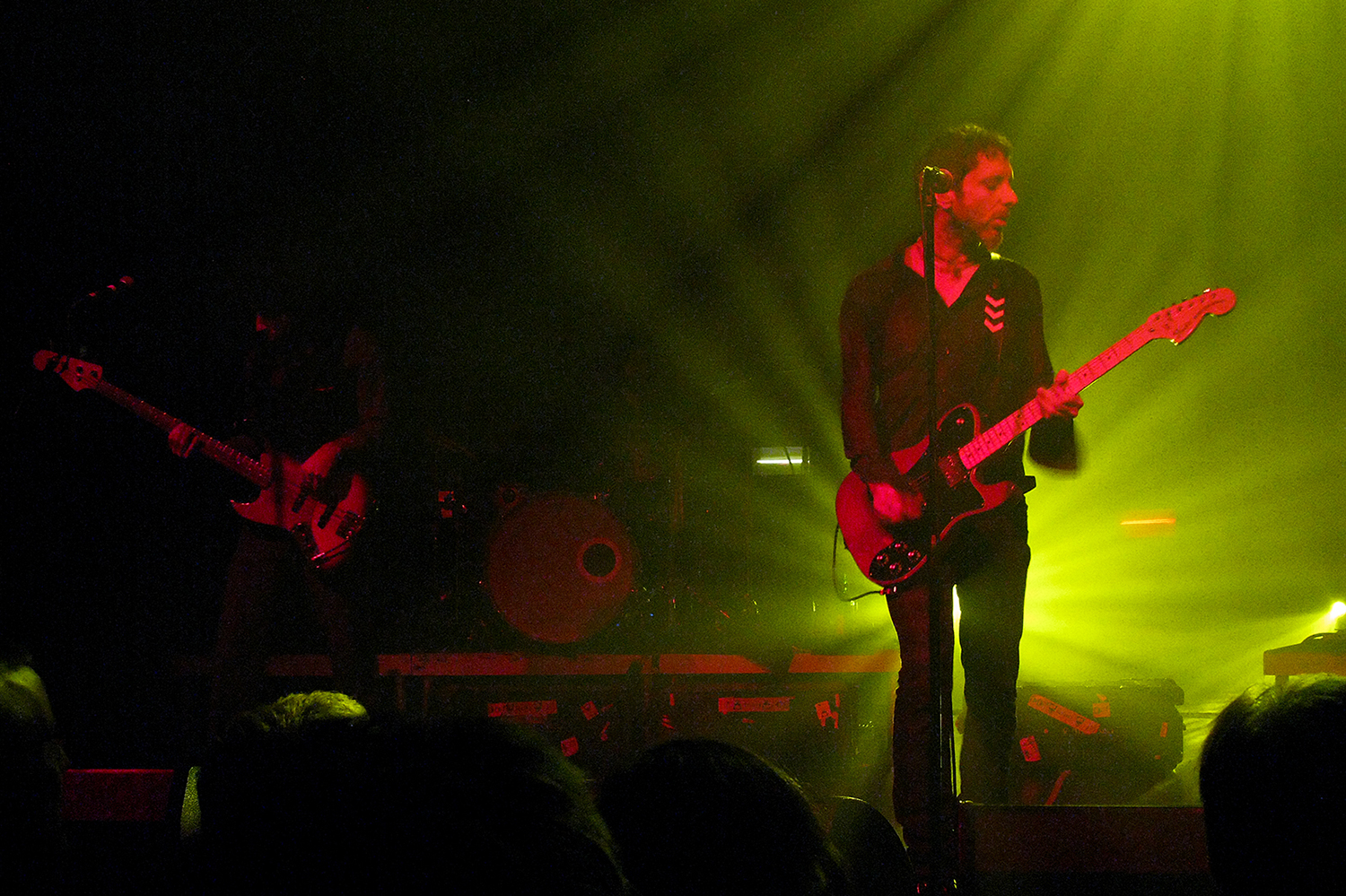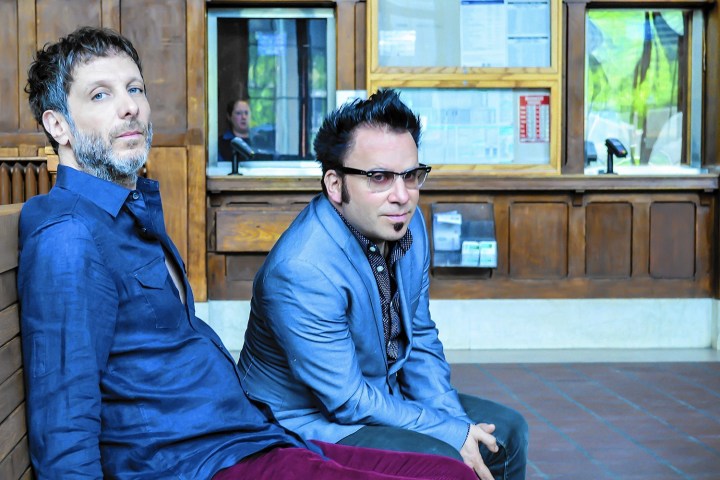
“For us, everything is about the adventure into that depth in two speakers.”
When you say someone has that “seven-year itch,” the connotation usually doesn’t pertain to music. But in the case of alt-rock iconoclasts Mercury Rev, music is the elixir that fuels their collective sonic libido, and that aural hunger is back with a vengeance on the band’s first album in seven years, The Light in You, out today via Bella Union in various formats.
“It’s great to get out in the world again after being atop a mountain for seven years,” agrees Rev’s co-founder Jonathan Donahue. “The idea was to rekindle that spirit and spatially design the sound in ways we hadn’t done for a while.”

Along with his perpetual partner-in-reverb, Grasshopper, Donahue infuses Light songs with a broad mastery of the pop palette, from the trippy ’60s vibe of Are You Ready to acoustified thrust of Central Park East to the vinyl-centric call to arms of Rainy Day Record.
Digital Trends called Donahue at the Mercury Rev recording compound in The Catskills to discuss the power of good reverb, loving the cassette, and how to make an album feel truly cinematic. I took a ride, and I’m coming up for air.
Digital Trends: This is the first time you haven’t worked with Dave Fridmann as your co-producer, which must have changed the dynamic of your sound to some degree.
Jonathan Donahue: That’s probably quite accurate. We’ve always recorded here in The Catskills, but the mixing of a lot of our vocals had always been done up at Tarbox [Road Studio] with Dave [in Buffalo]. But obviously, this time, we didn’t do that. We did all the mixing here, ourselves.
Certainly, we’re working on different equipment than Dave has — very different equipment than we’ve ever worked on before. By nature, that pushes you in a way and gives you a momentum you may not have had prior to that.
What gear did you wind up using on this album?
We were using Chandler mixers and the Curve Bender [analog EQ], and some very old reverbs, Pioneer true spring reverbs. It’s a little box from the ’60s that lights up.
Is that the direction you had planned from the outset of recording?
Yeah, without question.
“Nothing at 96 or even a million kilohertz is going to change a crappy song.”
I’d say mission accomplished. The Queen of Swans has that same feel as well. And Rainy Day Record — well, I’m going to go out on a limb and say you’re a fan of vinyl.
I suppose I always have been, but I’m actually a cassette guy.
That’s interesting. How come?
I think it was the ritual of making the mix tape for the girlfriend. It’s almost a state of meditation, you know? I remember that ritual, where you’d really ponder which song goes where and the sequence, in a way that very few people do these days.
There was a very specific art to making a mix tape back in the day. You had to figure out the exact timing as to how much could fit on each side of the tape, and sometimes you’d miss the cue to hit the right button in time, and then you’d have to start over. It was a real science.
It was an evening’s work. And you’d make sure the person got it, and that they’d listened to it. And then you’d get it back and it would stay on the floor of your car with the cigarette butts and coffee stains, and you’d see if it would play, years later, in your old, crappy cassette deck. That part of it is probably much closer to my heart than the vinyl aspect.
Are you going to release a cassette version of The Light in You?
Actually, that is one thing we spoke about with Simon Raymonde [co-founder of Bella Union, also of Cocteau Twins fame]. “Can we do a cassette?” He said, “Sure,” so I think we’re doing like 100 cassettes, or something.
Of all our catalog, the stuff I actually would keep was the cassettes. I don’t keep all the vinyl or the CDs, but I do have all the cassettes of everything we’ve ever done.
That’s cool. So you still retain a strong connection to the idea of making album sides, right?
Especially when we’re in mixing mode, we only talk about sides: “That would be a great way to end Side 1!” Even back when vinyl wasn’t popular in the ’90s and 2000s, we’d always think, “That’s Side 1; that’s Side 2.” Finally, it’s come around. And for a band like Mercury Rev, it actually benefits us in a lot of ways, because people are listening to a whole side again, rather than just cherry-picking MP3s.
That’s where the little engine turns on. And when we’re talking about a song like Rainy Day Record, vinyl seems to be giving a lot of bands these days a second life.
Yeah, “You can’t fool ol’ Peter Hook” is a great line, and so is, “Bring me the ear of Thurston Moore!” People will be dissecting that song to get all the references — you’ve got Terry Riley in there, and Kokopop too. Well played.
(chuckles) Yeah, thanks. I think a lot of bands from those days never translated onto CD. That’s where the heartstrings were for me on that song. I tried to name a few of those groups off the top of my head.
Speaking of the CD, is that a nonstarter format at this point? Did you like it at all, or no?
I’ll take what I can get these days. If you want to release it on the back of a diner napkin — anything to get the music out there. Let’s face it, people have such short attention spans, so whichever way people can digest the music, that works for me.
Do you have an opinion about streaming?
I do and I don’t. I have an opinion about artists getting paid, which I am a fan of people taking a stand.
“We need the Spotifys, but we also need musicians standing up for the rights of artists.”
In that way, it does help people and music that doesn’t have a ready outlet on Apple, or isn’t racked in the front at Barnes & Noble. We need the Spotifys, but we also need musicians standing up for the rights of artists in those outlets.
How about going the other way into the high-resolution universe, where you have people saying, “We gotta have 96/24 hi-res files of what we’re doing”?
Obviously, as an artist, you spend so much damn time at the mixing desk, and you’d like to know that someone’s hearing it at that fidelity. Having said that, most of the kids are listening on earbuds. It’s really hard for a lot of people — especially young people, who spend most of their day working — to sit down in front of large speakers or put on $200 headphones when they’re barely making rent.
As long as the music is preserved and available in high quality — it’s just like what Deutsche Grammophon was doing in the ’70s. I’m glad someone is paying attention to great mastering. You’re glad it was recorded on really high-quality microphones. But, you know, not every punk band could afford a Neumann. (both laugh)

Even the artists themselves are not always listening at the highest quality, even when they’re mixing. When I was in The Flaming Lips [1989-91], we would put the mix on a cassette, fresh from the board, and take it into the tour van, the old Econoline. That’s how we’d judge whether that was “the” mix — on a crappy car stereo. It defies logic, but it’s a feel thing. Nothing at 96 or even a million kilohertz is going to change a crappy song.
That’s the bottom line. You can record at the highest fidelity, but if the song, at its core, isn’t good enough, it really doesn’t matter.
That’s Robert Johnson. He wasn’t recorded at 96 kHz, but we live with that because the music, and certainly the voice, transcends the technology. That’s why we love music. It’s bigger than what it’s played on.
I’m with you on that. To bring it all back to The Light in You, the feel of this record is what ultimately wins out. You must feel happy about being able to capture what you were going for in terms of both performance and sound.
We like to feel that way. We’re always very enamored and quite enthralled with that fourth and fifth dimension in sound. Maybe compared to many bands, we try too hard, but for us, everything is about the adventure into that depth in two speakers.
Is sequencing still important to you, in terms of how we go from one track to another as the listener? Is it a lost art?
“It’s hard to protest poverty when you’re at work.”
It goes with the territory of bands like Mercury Rev, where our music is quite cinematic. We think of it as a film, or a book with chapters. Some bands, the chapters are kind of similar and it’s a non-sequitur kind of thing, but for us, we put it together in a very theatrical sense. It doesn’t always come easy or reveal itself right away in terms of the sequence, but generally we come pretty close to what the songs want themselves.
I always say, I don’t pick up a book and start with Chapter 25 and then kick back to Chapter 12, then jump to Chapter 30.
This is not like an encyclopedia. You can’t just skip around and hit on what you’re interested in at the moment. You can appreciate it, but it’s more illuminating as a whole by following the entire sequence of the record. That’s how I did it, and I’m sure you did that as well — it’s just in the DNA.
So true. There is an economy to the 11 songs here on Light. Being in that 35- to 40-minute zone is the right length.
It is. That’s the listening length I think we’ve all been conditioned to, just as a movie is about 2 hours. And that’s what really harmed music in the ’90s, because albums all of a sudden went to 72 minutes. For a while, everybody felt obligated to fill up 72 minutes, because listeners would say, “Hey, you’re only doing 40 minutes!” Everyone was playing that silly game for a while, just like they started playing the Volume Wars.
And that’s why people started skipping around on albums, because who wanted to listen to 72 minutes? People started flipping through albums like they were magazines.
This 11-song sequence is so right that you go right back to replaying it. Was that also a goal of yours?
Yeah. But from the beginning, you’re just grateful something is coming. Once you get in that seven-to-ten song range, you start thinking, “OK, what’s the final denouement of the movie? Is it here? Has it made itself clear to us?”
It’s like shooting movie scenes out of sequence, but it’s up to you to put them back in the right way. And usually, it’s not us; it’s the songs themselves that tell us where they want to go and where they’re meant to be.
